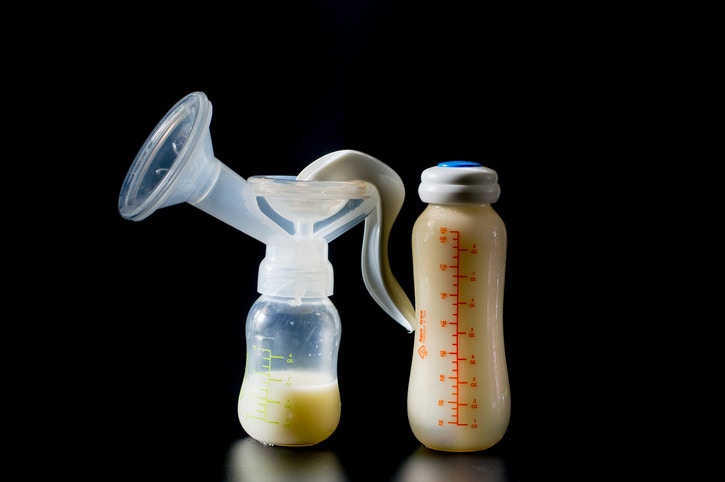Balancing a career and a breastfeeding relationship can be a juggling act. Knowledge of your rights as an employee, as well as learning a few practical tips, can help ease the transition from maternity leave back to the workforce as a pumping mother.
After the Affordable Care Act was passed in 2010, nursing mothers received the right to express milk at work. Given breastfeeding’s numerable benefits for mother and child, it made sense for the federal government to encourage breastfeeding, and in doing so, improve public health. The changes in the law also gave more women an opportunity to maintain the feeding relationship they wanted to have with their child.
The changes in the law protected nursing mothers in two major ways:
Providing a place to pump
The law requires employers to provide nursing mothers with a space to pump. This space must be “shielded from view, and free from any intrusion from co-workers and the public.” Most importantly, the space must not be a bathroom. Even if the workplace is small, a company cannot require employees to pump milk in a bathroom.
Providing time to pump
For up to one year following the birth of the child, employers must give women a “reasonable amount of break time” to express milk. The law does not dictate the frequency or duration of these breaks as these vary from woman to woman.
Exceptions
Not all women are protected under the law. Companies with 50 or fewer employees are not required to provide break time to pumping mothers if they can prove doing so causes an undue hardship on the employer.
It is also not mandatory that employees receive compensation during their break time. But if a mother pumps during a break that is typically paid (such as a lunchtime), employers must pay for that time. Salaried employees are not protected under the Fair Labor Standards Act, and are therefore not covered.
Even if a place of work is not legally required to offer breastfeeding support, doing so can be in their best interest. Breastfeeding, because of its health benefits, leads to savings in health care costs as well as reduced absenteeism among parents whose children are breastfed.
Providing support to nursing mothers also helps businesses retain employees. One study showed companies with lactation support programs retained 94 percent of their employees after their maternity leave, compared to the national average of only 59 percent. Retaining employees leads to a better bottom line for companies.
Room for improvement
Unfortunately, for many women in the United States, a short maternity leave can often lead to a decrease in breastfeeding rates if a women goes back to work before breastfeeding is well established.
One study found that women who returned to work between one and six weeks were less likely to breastfeed than those who went back 13 weeks or later. While protections for pumping women are helpful, perhaps the best way to encourage breastfeeding is to ensure that all mothers have access to paid maternity leave.
Even with federal law offering many protections for nursing mothers, pumping at work can take some getting used to. Getting into a routine that works for you will help the process become second nature. Here are a few tips to get you started:
Refrigerate your pump parts
If you follow any piece of advice for pumping at work, make it this one. There is no need to wash your parts and use valuable break time every time you pump. Instead, simply stick all of the parts that come in contact with milk in a ziploc bag and place in the back in the fridge until the next time you pump. At the end of the day, simply stick the parts into the dishwasher – no hand washing required.
Be honest with your coworkers
Giving coworkers a quick heads up about what you are doing behind closed doors can help prevent some awkward scenarios later on. While no one typically wants to discuss their breasts in the workplace, it’s better than having someone walk into your office unannounced while your shirt is still unbuttoned.
Once, I had to spend a morning in meetings at the state capitol. I figured my only options for pumping were either in my car in sub-freezing weather or in the third floor bathroom, which was rarely used. I opted for the bathroom, and moments after setting up, a stream of librarians from a conference poured in, holding the door open for a line that stretched well into the hallway. Had I thought to ask my coworkers ahead of time, they could have directed me to the pumping room readily available for use.
Find a routine that works for you
For a time, I barely made enough milk to send to my son’s daycare for the next day. I found that squeezing in an extra pumping session, either in the morning after my husband took him to work, or in the evening after he went to sleep, helped me build a backup stash in the freezer.
Working close to the daycare, I also frequently popped over on my lunch break to nurse. It meant one less time strapping myself to the pump, and I enjoyed the break and the snuggles with my baby. I also found myself more refreshed and focused in the afternoons.
Take care with your bags
I played around with different types of milk bags until I discovered one that worked the best for me (Target’s Up and Up brand, least likely to spill all over the shared mini-fridge). I also found that laying my bags flat to freeze, and then stacking them in a shoebox – oldest at front, newest in the back – kept my freezer from becoming a mess.
Lastly, if you’ve pumped for weeks in preparation to go back to work, do not leave your freezer door ajar for several hours unless you want to see all your hard work in a puddle on the floor.
Trust me on that one.



